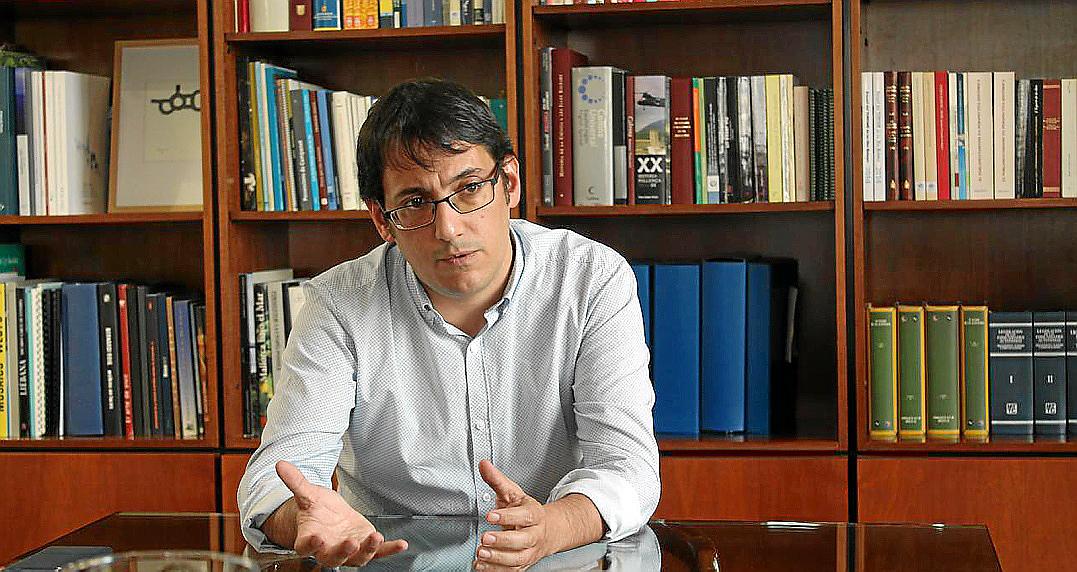For Negueruela, this has to be particularly chastening. Several weeks ago, he was talking up September’s tourism.
His original analysis was that while August would be modest, September would be good.
He said this before the pilot plan in June and had good reason to make the observation. But, as we know, the hopes raised by the pilot plan and the Spanish government’s opening of borders came to very little.
The Negueruela conclusion is an obvious one.
Everyone knows that it is over and that, even if there were suddenly to be an improvement in the virus data and governments were to change their travel policies, the likelihood of late-season foreign tourists would be minimal.
Look at what’s happening with Greece and Portugal: one minute ok, the next minute not ok.
Travel for holiday purposes this summer was always going to be risky, but it has been shown to be doubly risky because of travel decisions which have been sprung on holidaymakers at short notice.
The tourism statistics are also obvious in that no one could have expected anything other than massive decreases in terms of numbers of visitors and of their spending. Nevertheless, obvious or not, the figures are chilling.
The one source of consolation for the Balearics was that the region attracted more foreign tourists than any other Spanish region in July.
It is small consolation because the number of tourists was small - 830,215 in all, a fall of 70% compared with July last year. Of this number, 588,431 were foreign tourists.
They alone were down 75%. Spanish tourism fell by only (only!?) 45.6%. Although there is typically scepticism about the tourist spending statistics, these should require particular attention.
A fall of 78% in July tells its own story of economic devastation - a mere 638 million euros over the course of the month. To give this some sort of context, this July spending was equivalent to under two per cent of total GDP in the Balearics last year.
The 2,892 million in July 2019 was 8.6% of annual GDP. The August figures are bound to be worse.
The value of staycations
The Spanish media continues to argue that the UK’s quarantine rules this summer were political. There may well have been some politics, but as argued in this column last week a reappraisal of both quarantines is merited, the second in particular. The virus data were low in the Balearics at the time of the announcement, but look at what happened with those data within a week of the announcement. Claiming politics does perhaps rather obscure a need for self-analysis and an explanation as to why the data rose so dramatically.
Still, politics or not, the economic benefits of staycations in the UK have been indicated in a report by Parkdean Resorts - an additional 8,240 million pounds, it is estimated. The company says that there has been “spectacular growth” this summer and that its figures for summer 2021 “seem to be even better”.
In Germany, a Cologne-based data analysis company, TrevoTrend, looked at German tourist demand for the week of August 17 to 23. Holiday trips within Germany rose by six per cent over this period, while trips to Spain were down 33%. Other countries were not immune, albeit the falls were less dramatic: Turkey fell 19%, France ten per cent, and Greece four per cent.
The study shows that for that week in 2019, just 1.63% of holiday trips were within Germany, a figure which, I have to say, I find very low, given that parts of Germany, e.g. the Baltic coast and the Bavarian lakes, are not unpopular with German holidaymakers. Nevertheless, the lure of the overseas holiday in the Mediterranean is very strong.
The Paradores buck the trend
T HE state-owned paradores, hotels in converted historic buildings such as castles, have been having a decent summer by comparison with much of Spain’s tourism industry. All the 96 paradores opened towards the end of June. Between them, they achieved occupancy of 72% in July and 82% in August. These figures were below last year’s, but not by much - respectively, 73.8% and 84.6% in July and August 2019. On average, the paradores have 65 rooms.
One reason for this performance is that paradores mostly attract Spanish tourists. A second is that they are typically located in remote places and are relatively small in terms of rooms and guests. Allied to protocols in place, these characteristics convey a sense of high health security.
There are no paradores in the Balearics. The first, in Ibiza, is scheduled to be ready in 2022. There is an investment of 21 million euros.
It isn’t just Majorca
Iago Negueruela, when not lamenting the likely end of the summer season or presenting dire economic figures, noted the other day that the whole of the Mediterranean has been affected this summer. He’s not wrong in this regard, but certain destinations had been doing rather better than others. Benidorm was one of these.
A couple of weeks ago, I noted in this column that occupancy in the province of Castellón and the rest of the Costa Blanca (Benidorm included) was up to 64%.
By the end of August, this was down to 50% in Benidorm, and it is now reckoned that because demand has fallen so much, especially the British, there will be no more than around fifteen out of the 140 hotels open by the end of this month.
Spanish tourism had been contributing to the occupancy, but in September it won’t be to anything like the same extent.


No comments
To be able to write a comment, you have to be registered and logged in
Currently there are no comments.